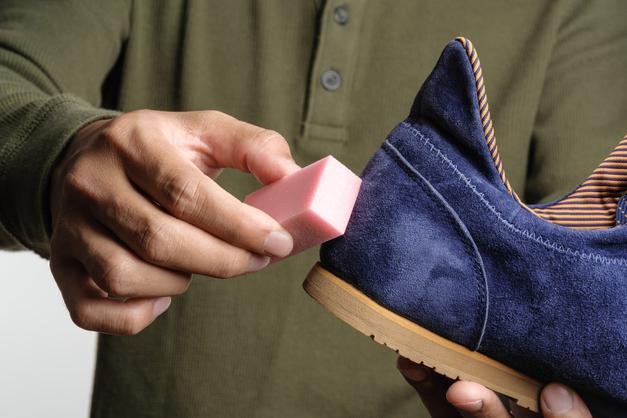
FashionWe teach you how to clean the most delicate material to make shoes.
By Daniel Vasquez
When the transition from autumn to winter begins, there is a fabric that, par excellence, is almost the king of the coldest season of the year: suede. A material that we find in structured jackets, accessories such as bowling bags or belts, vests and, of course, in shoes, where it has a greater presence thanks to its very composition. Suede -also known as chamois or suede- is the result of leather that is made from the inside of sheepskin, mostly, although goat, pig and calf suede are also made. Its versatility and application in different pieces is due to its special characteristics such as thinness, softness and docility to adapt to cuts, seams or merge with other materials.
Investigating in detail the origin of this material would make us travel through time and. even so, there would be doubts about its legitimate conception. But reviewing the yearbooks of history we can get to the origin of such a popular garment in the male wardrobe: the Desert Boots. This shoe takes us back to the late 1930s when Nathan Clark -of the eponymous shoe company- designed an unlined suede bootie while traveling in Myanmar and whose archaic production was carried out in Cairo. In the war years, the British troops adopted this model of shoe to use them during the desert campaigns of the Second World War and, thus, this garment was baptized as desert boots that have not changed at all to this day, even the suede has not changed either. has received modifications.

Desert boots, like any other suede shoe, being a delicate and natural material, require specific care and treatment to preserve their original appearance for much longer. To achieve this, we have gathered some essential points to avoid and reverse negative effects on the suede.
After a day of use it is important to remove the dust and dirt that accumulates during the day. Before storing them, it is necessary to remove the pollution with wet wipes or a damp sponge or cloth; check that no water drips onto the shoe and gently rub the suede. On the sole you can carve a little more intense.
If you have forgotten to clean your shoes on a daily basis and the dirt begins to show more intensely, it is necessary to resort to the use of a special brush for suede -you can replace it with a soft-bristled toothbrush- and rub over the dark areas, always, in the direction of the hairs of the chamois itself.
Believe it or not, you can remove light stains -such as a drop of coffee or dirt stains- with a crumb rubber, the one we used when we went to elementary school and that we liked so much because they erased everything. He does the same thing on the suede. A simple but very affective trick that you can apply quickly.
Suede is a porous material and enemy of moisture. Therefore, his cleaning does not include water at all. This should focus on a daily exercise to avoid complex stains that adhere to the leather and, due to the effect of time, are more complex to eradicate; never wash them or expose them to the sun for hours if you don't want your shoes to lose their original texture permanently.